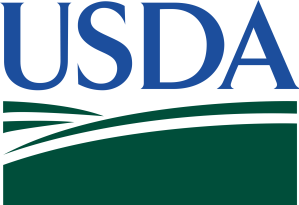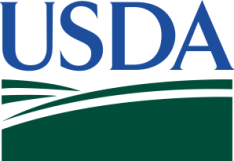Cattle on Feed Up 1 Percent, USDA Montana Reports Week Ending May 23
United States Cattle on Feed Up 1 Percent
Cattle and calves on feed for slaughter market in the United States for feedlots with capacity of 1,000 or more head totaled 10.6 million head on May 1, 2015. The inventory was 1 percent above May 1, 2014.
Placements in feedlots during April totaled 1.55 million, 5 percent below 2014. Net placements were 1.48 million head.
During April, placements of cattle and calves weighing less than 600 pounds were 320,000, 600-699 pounds were 240,000, 700-799 pounds were 348,000, and 800 pounds and greater were 640,000.
Marketings of fed cattle during April totaled 1.64 million, 8 percent below 2014. April marketings are the lowest since the series began in 1996.
Other disappearance totaled 66,000 during April, 20 percent below 2014
Read more from the USDA’s May 22 Cattle on Feed report.
Montana Weekly Auction Summary for the week ending May 23, 2015
Market: Billings Livestock Commission, Miles City, Public Auction Yards
Receipts: 2,606; Last Week 5,452; Last Year 2,671
Compared to last week: Feeder cattle were all too lightly tested this week for an accurate market trend. Feeder cattle were of mostly plain and average quality this week, with a few small packages of attractive cattle scattered throughout the sales. Demand for feeder cattle continues to be moderate to good, however demand for high quality feeders is good to very good on very light offerings.
Weigh-up cows sold with good to very good demand this week on mostly moderate offerings. Slaughter cows sold 1.00-2.00 higher on all classes of slaughtercows offered this week. Packer buyers continue to have to fight for offerings as buyers looking forcows to feed and breed push prices higher yet again this week. Quality this week was overall very good which gave buyers even more reason to fight over offerings.
Buyers searching for breeding stock purchased young aged cows on moderate to good demand this week. Young aged 2-3 year olds sold mostly higher with increased interest from all buyers. Feeding cows sold higher this week as well. Cow/calf pairs continue to be offered across the state. Most offerings sold with very good demand. Aged broken mouth cows sold on the best demand this week with many ranchers searching for short keep cows to run on grass this summer.
Read more from USDA’s May 23 Montana Weekly Auction Summary.
National Feeder & Stocker Cattle Summary – Week Ending May 22, 2015
Feeders this week total – 204,700; Included Auctions-168,000; Direct-29,900; Video/Internet-6,800.
Compared to last week, yearlings sold fully steady to 3.00 higher with instances 5.00 higher as advance continues to be on heavy yearlings over 800 lbs. Demand remains very good on yearlings as the draw of steady fed cattle prices on light trade Wednesday in Kansas at 161.00 continues to bring additional interest back to feeder cattle.
Steer and heifer calves traded steady to instances 5.00 higher where tested (mostly throughout the Midwest).Production areas farther north and west simply don’t do enough fall calving to test the market this time of the year, and the old crop calves are long gone.
Friday’s Cattle on Feed Report had May 1 inventory at 101 percent; placements at 95 percent and marketings at 92 percent. Inventory was close to expectations, with placements significantly smaller than expected and marketings close to expectations. Corn and soybean planting have had one of the nicest planting starts in several seasons, as corn planting is now 85 percent complete ahead of the 5-year average of 75 percent. Soybeans are 45 percent planted ahead of the 5-year average of 36 percent.
Auction Receipts: 168,000 Last Week: 147,500 Last Year: 172,200
- Montana 2,600. 89% over 600 lbs. 40% heifers.
- Steers: Medium and Large 1 700-750 lbs (736) 238.20; 750-800 lbs (778) 228.90.
- Heifers: Medium and Large 1 600-650 lbs (625) 236.91; 700-750 lbs (721) 216.21.
- Video Internet Receipts: 6,800 Last Week: 29,600 Last Year: 38,000; (86% over 600 lbs, 20% heifers)
- Western Video Market: 5,900. 86% over 600 lbs. 23% heifers.
- Northcentral Region (CO-WY-NE-MT-ND-SD-IA) Steers: Medium and Large 1 Sep few loads 425 lbs 350.00.
Read more from the USDA’s May 22 National Feeder & Stocker Cattle Summary.
Weekly Montana Hay Report
Compared to last week: Very little change was seen in the hay market this week as farmers just wait on the new crop to come in. What little bit of hay moved was moved at steady money. Western dairies still have no new contract prices. Demand for Alfalfa hay is light on very light supplies.
Many parts of central Montana received between 1.5 to 3.0 inches of much needed rain last weekend, which was a welcomed sight for all hay farmers. This rain did help curb the worry of an all-out drought, as well as, curb some demand for ranchers buying hay to stock up in case of a drought.
In western Montana hay continues to be sold to cover needs until cows can be turned out. Central Montana range conditions improved drastically with the recent rainfall and many ranchers are busy turning out cows.
Additionally, new crop hay contracts continue to filter in with slightly lower prices since the last rain. Light demand was seen for grass hay marketed within the state. Good demand continues to be seen for hay to ship to other areas of the country.
- Alfalfa: Supreme: Small squares, 200.00
- Premium: Large squares, 150.00-155.00
- Good: Large squares, 120.00
- Small squares, 138.00-150.00
- Fair: Large squares, 90.00-130.00
- Grass: Good: Large Rounds, 90.00-100.00; New crop contract, 110.00-120.00; Large Squares, 100.00
- Timothy Grass: Premium: Small Squares, 240.00. Good: Small Squares,160.00-180.00.
- Straw: Large Squares and Rounds, 35.00-40.00.



 By Brett Crosby,
By Brett Crosby, 


